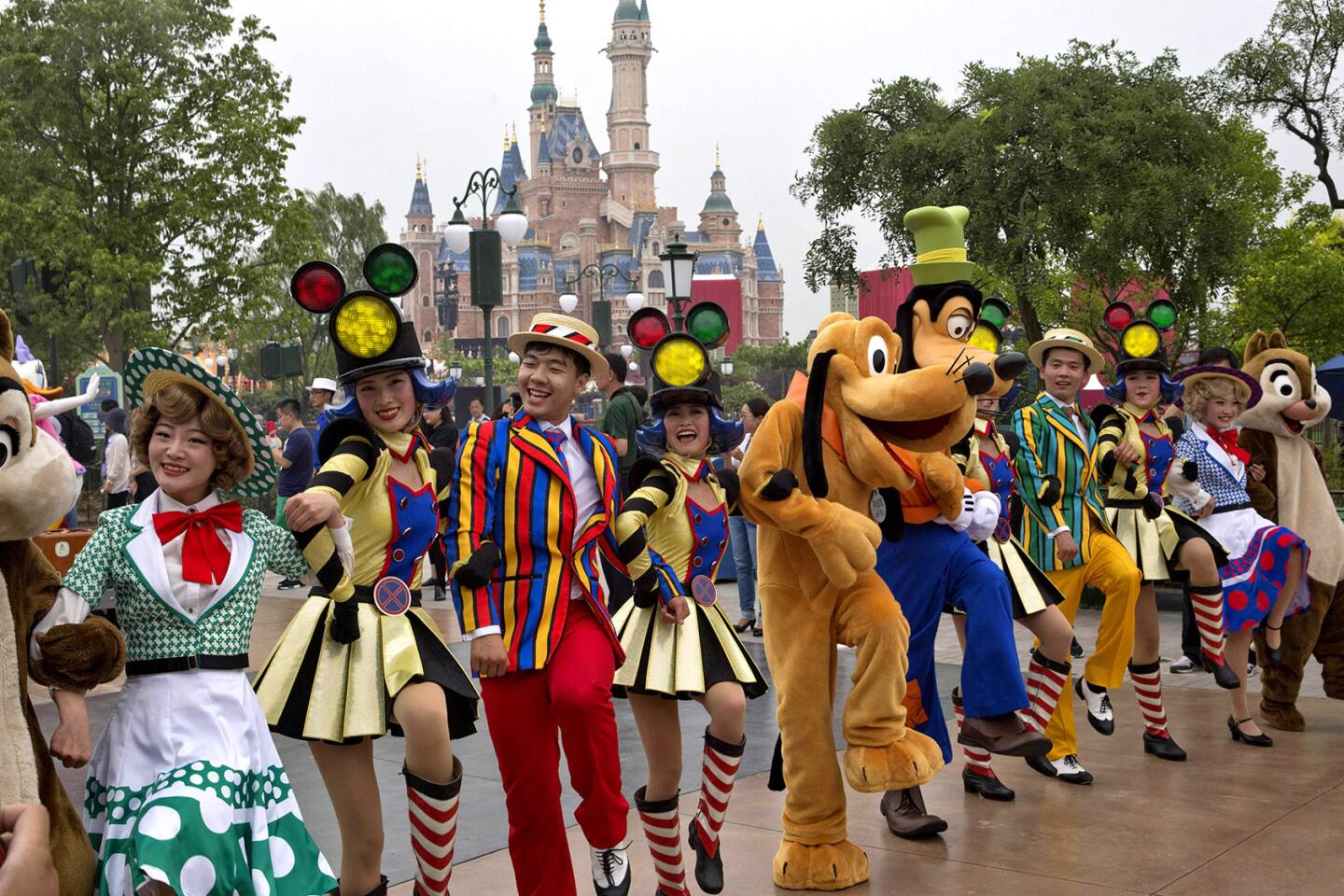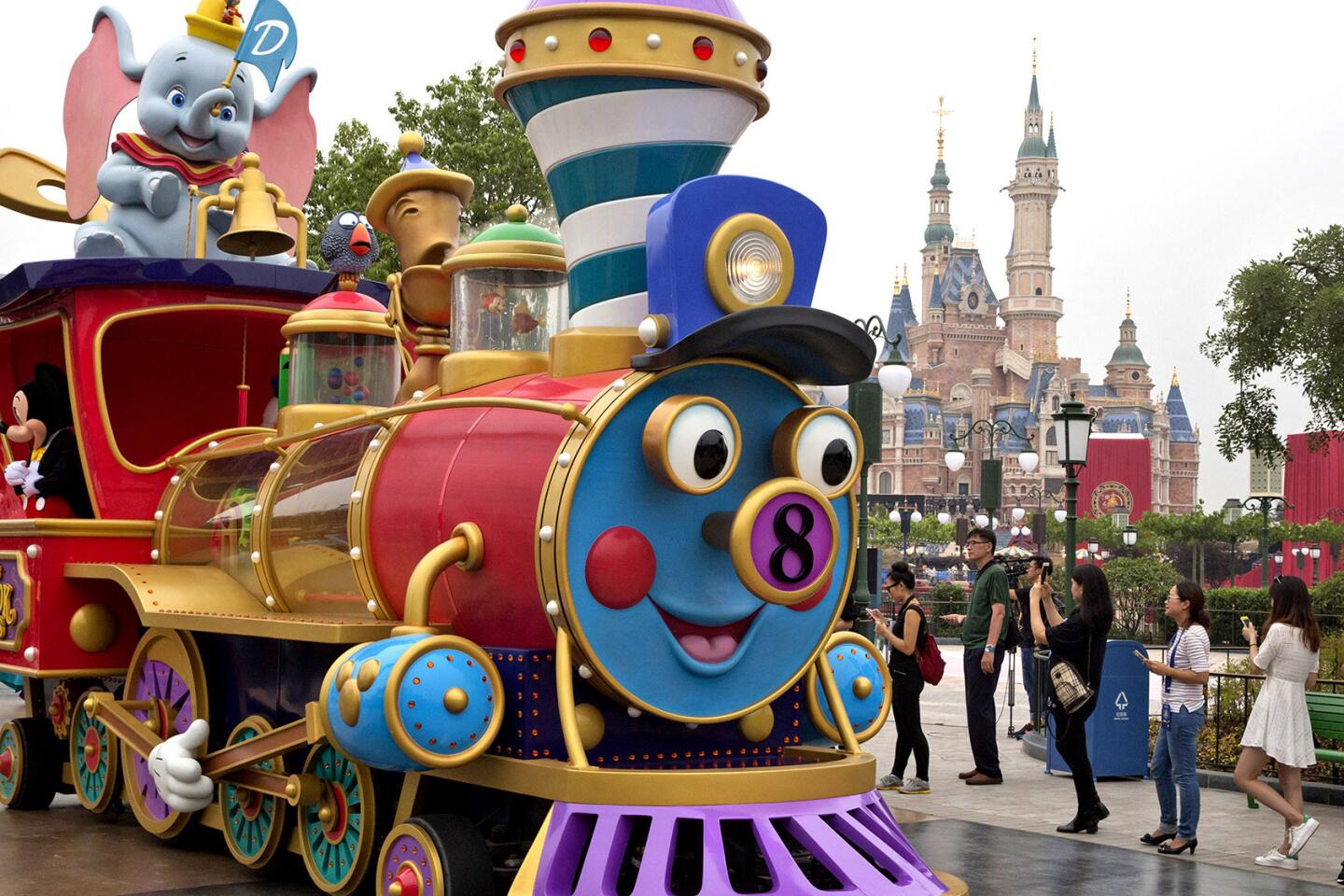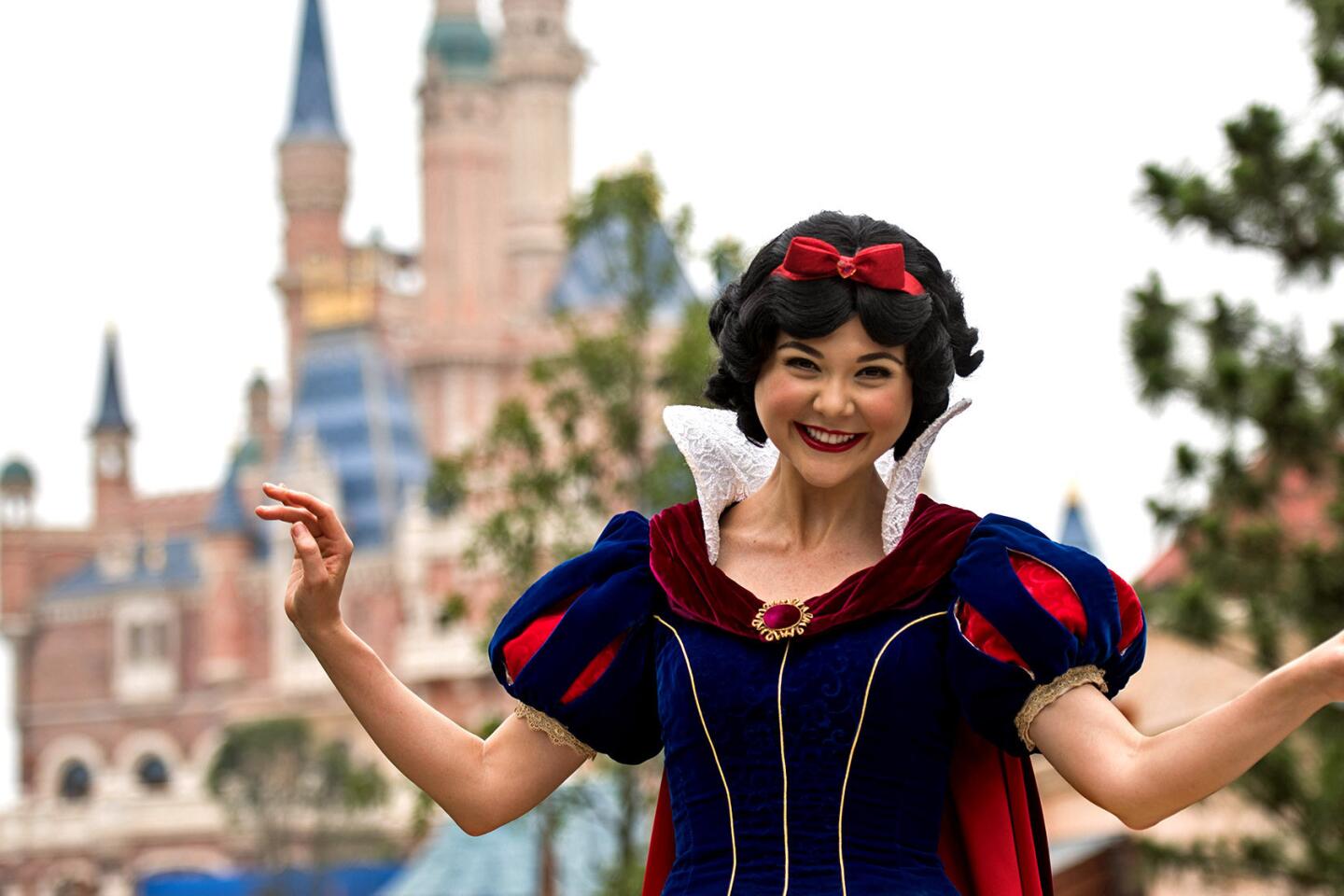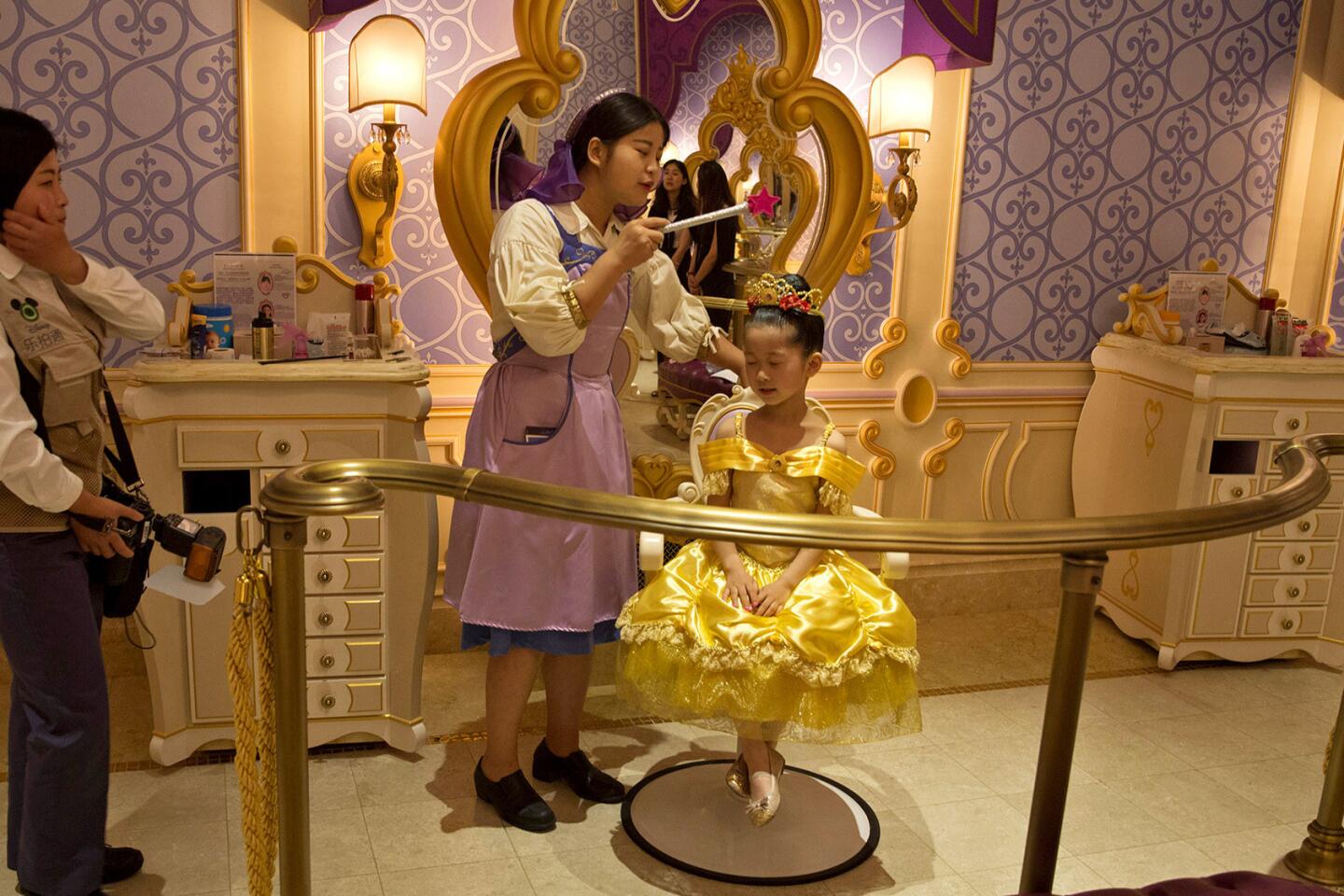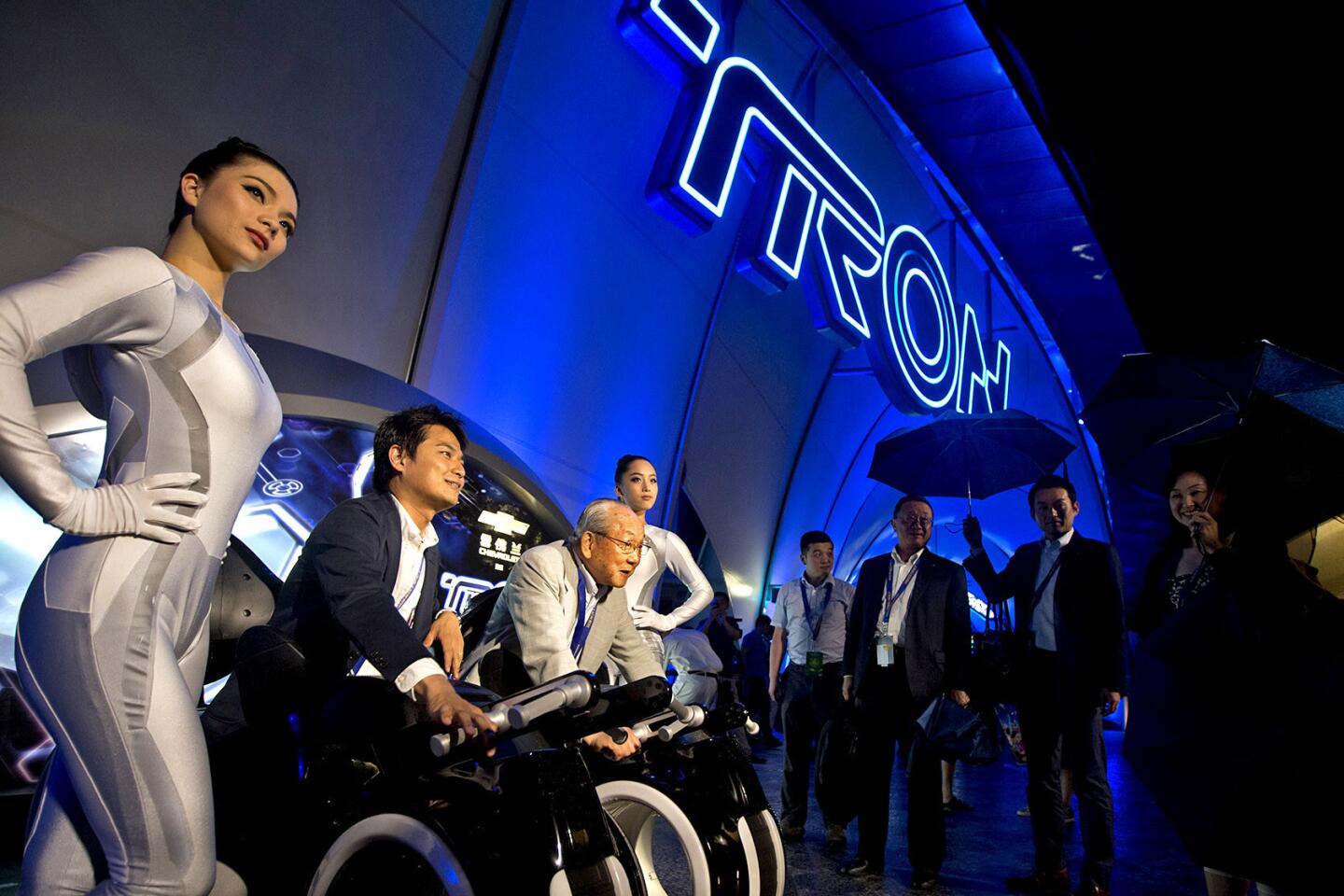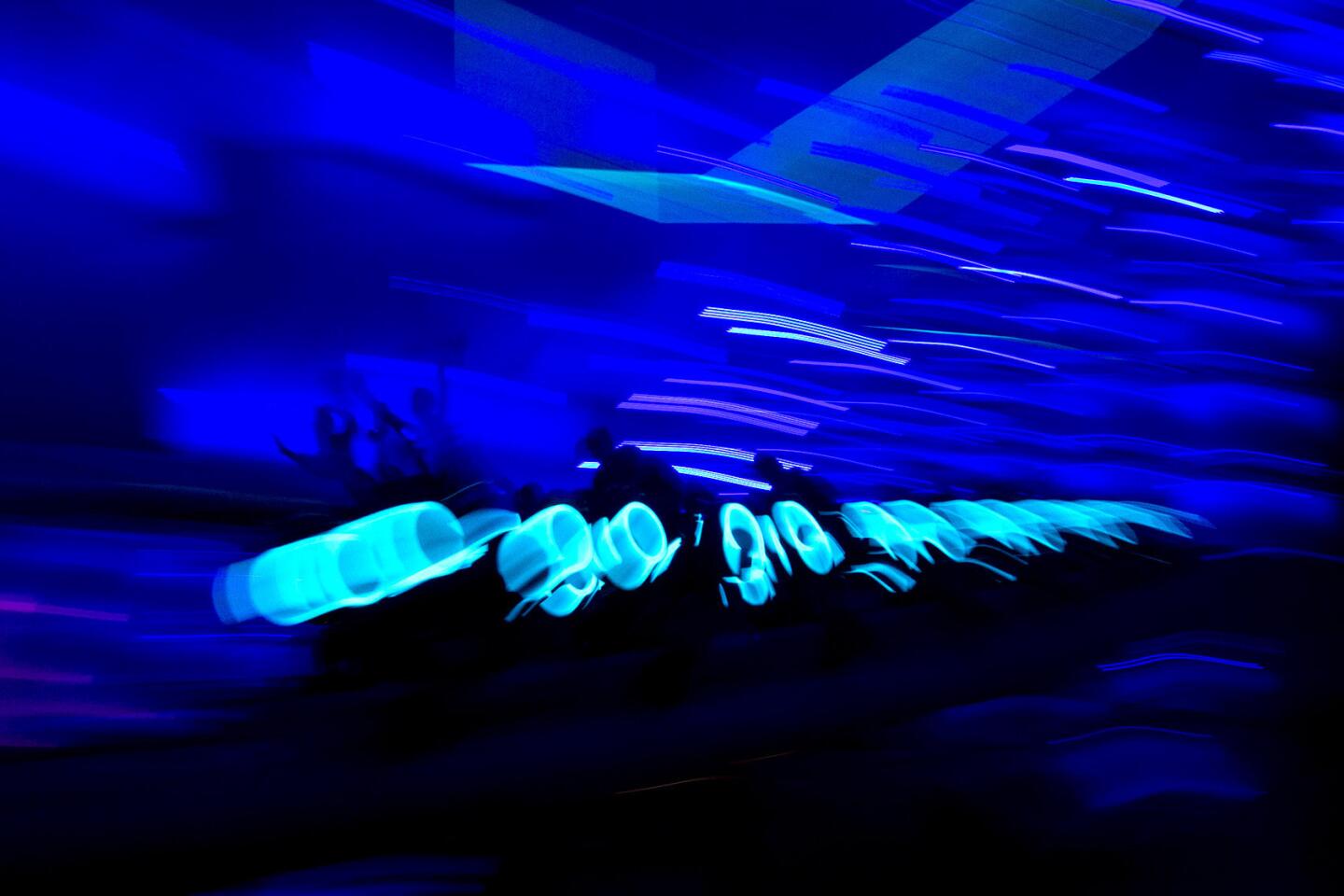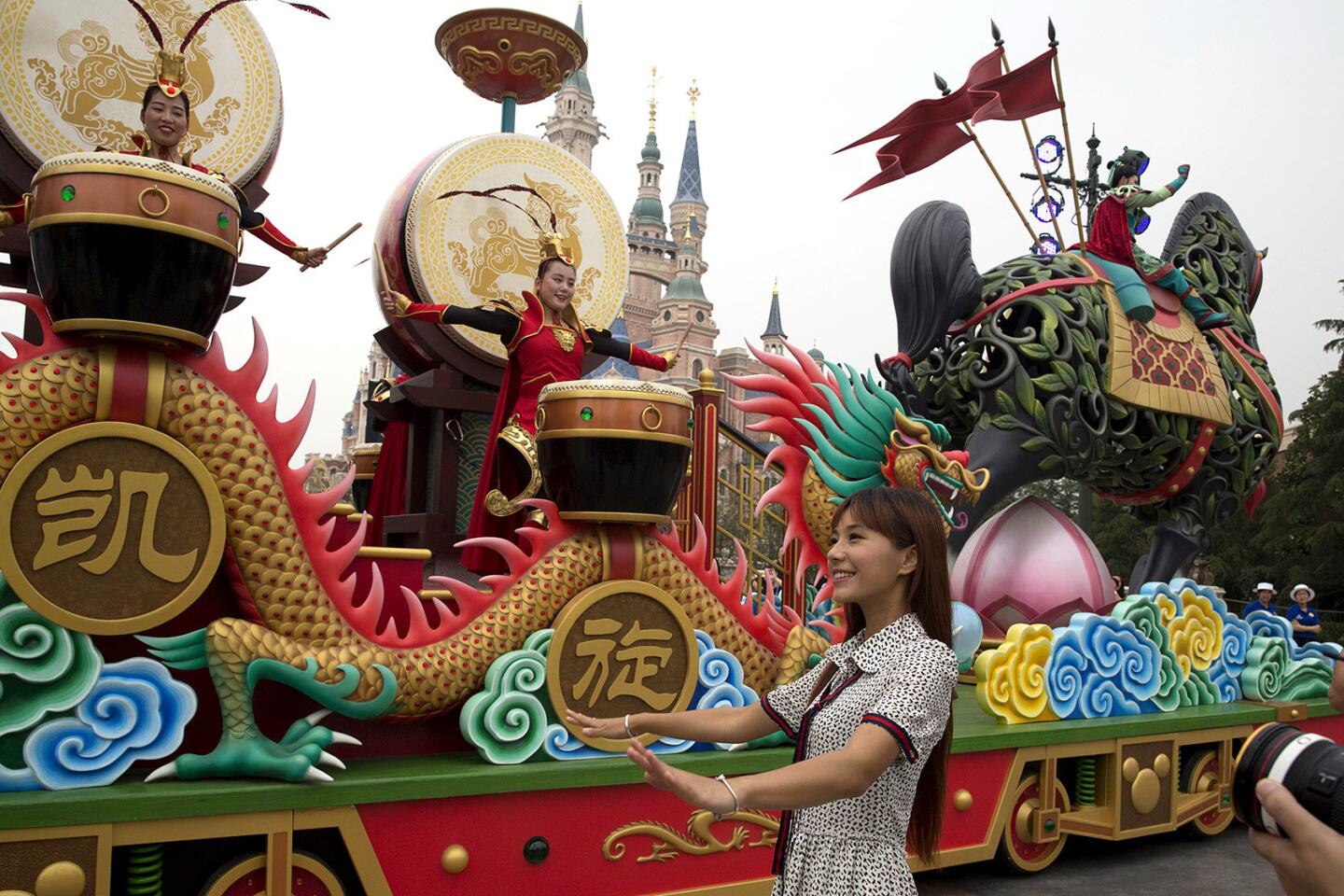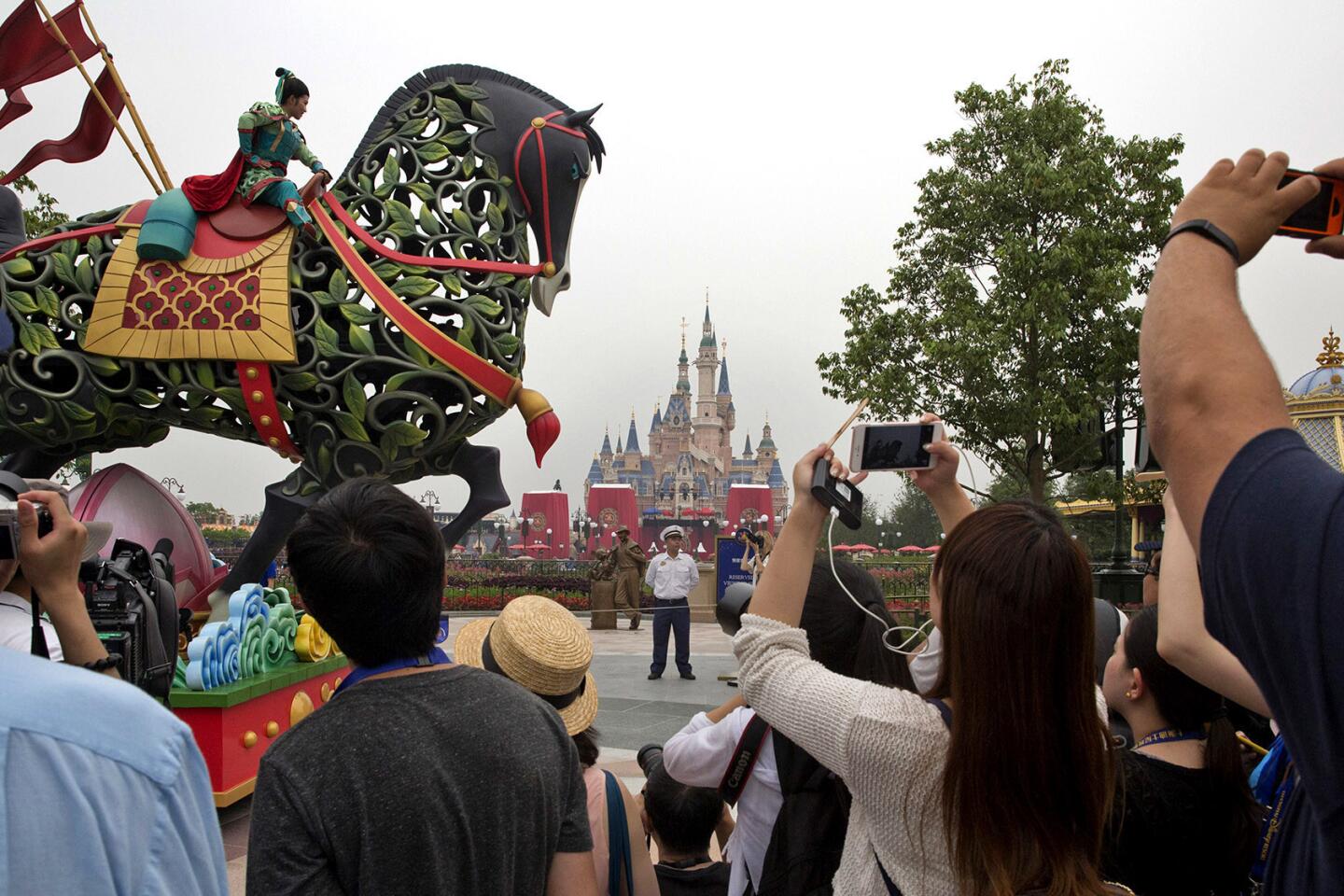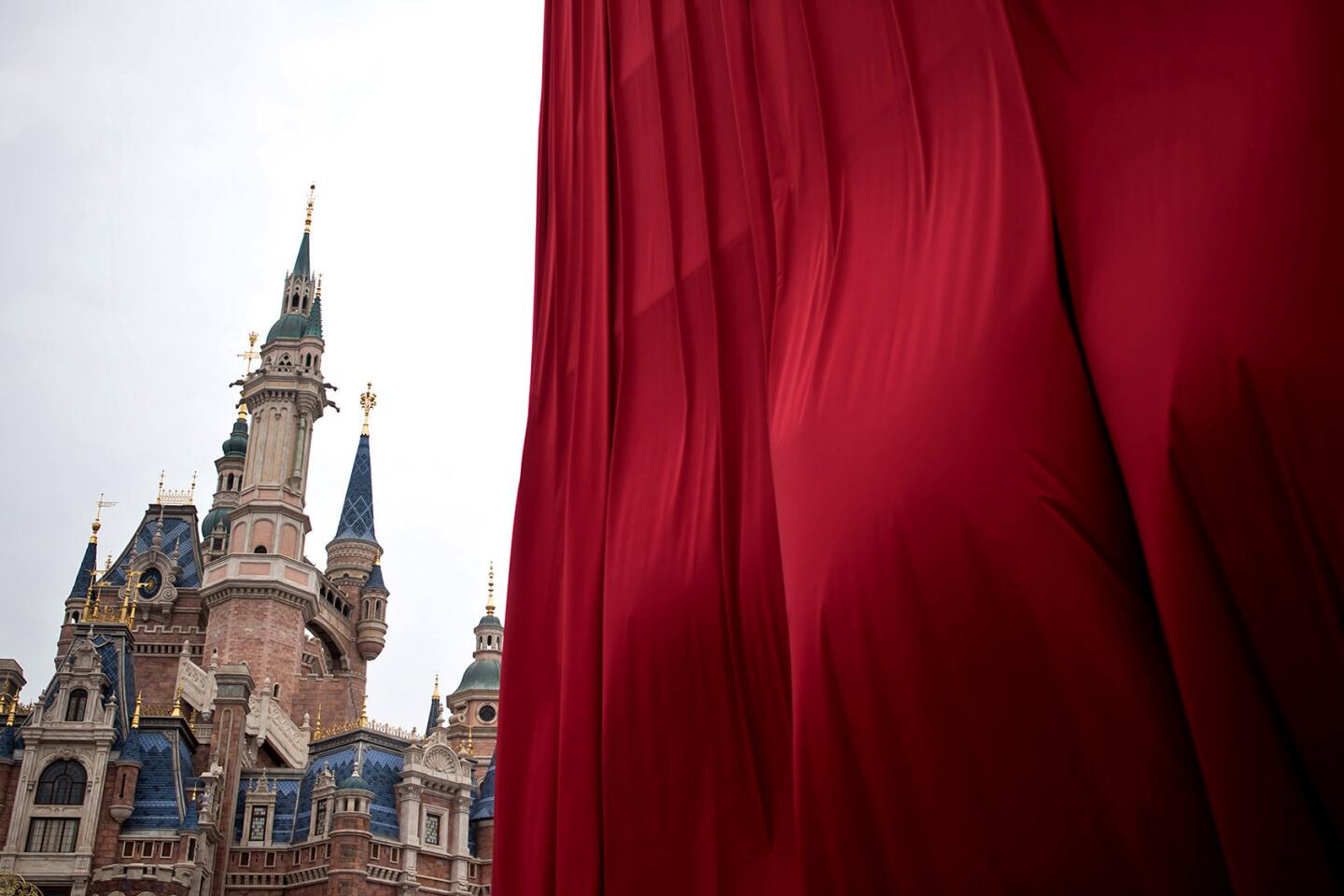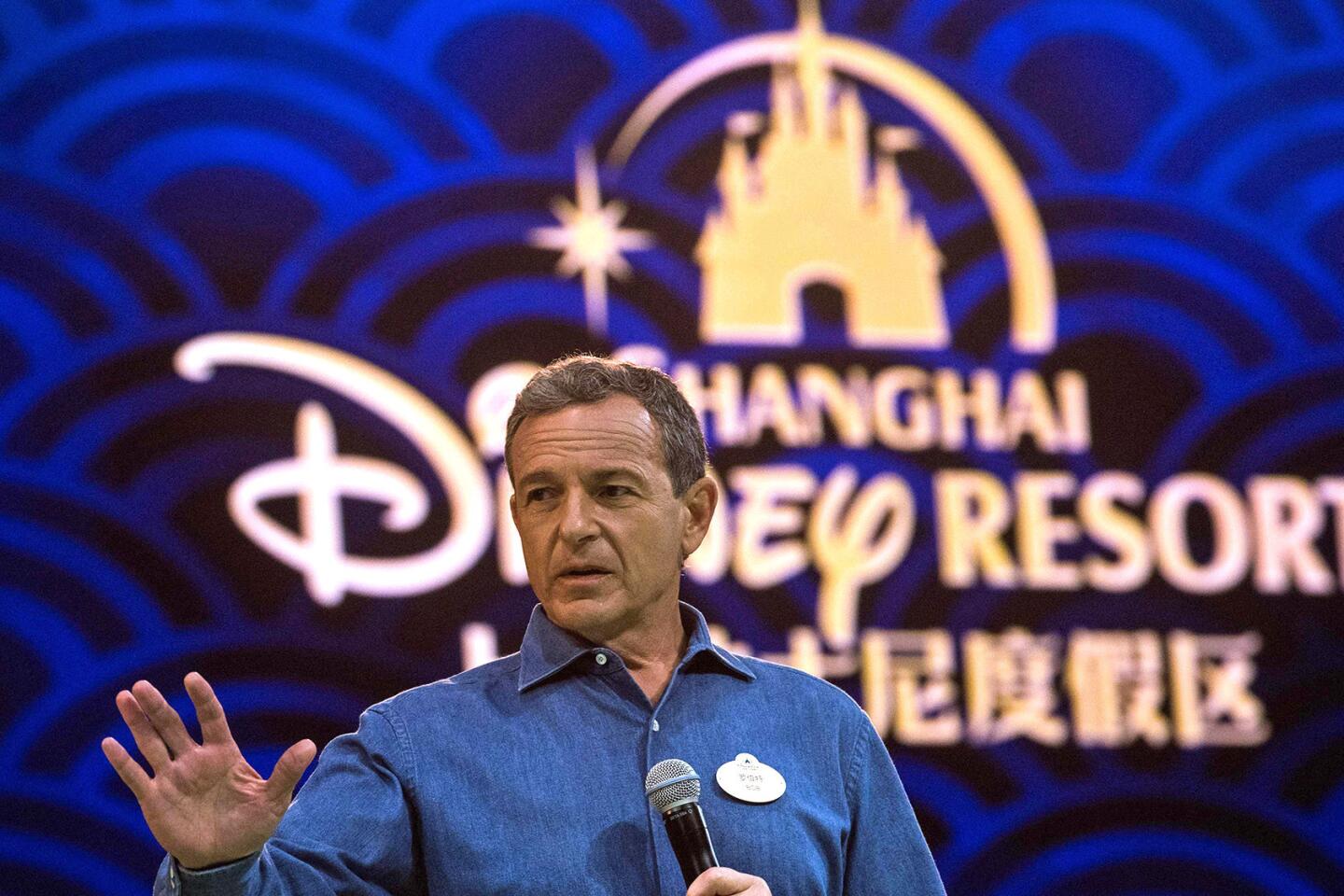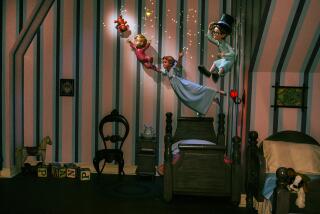How Chinese is Shanghai Disney?
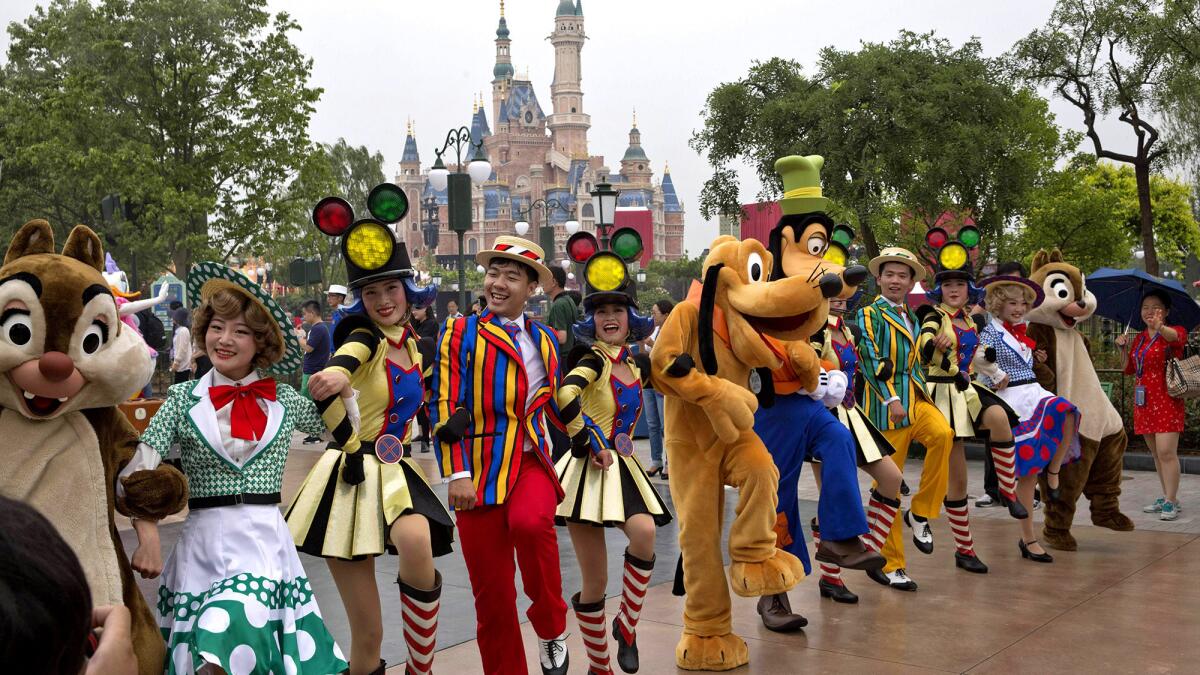
- Share via
Reporting from Shanghai — With its giant Starbucks, Cheesecake Factory and Wolfgang Puck restaurant, you might for a minute mistake the new Shanghai Disney Resort for Anaheim or Orlando, Fla.
A marching band walks by playing “Zip-a-Dee-Doo-Dah,” then Pharrell Williams’ “Happy,” along with a snippet of “When the Saints Go Marching In.”
But little differences gradually come to light: Squat toilets? Check. “The Lion King” in Mandarin (with no English subtitles)? Check. Eel over rice and Peking duck pizza for lunch? Check and check.
So just how Chinese is Shanghai Disney?
That’s been the $5.5-billion question for Disney fans around the globe as the Burbank-based entertainment giant opens its first park in mainland China in close cooperation with state-run Chinese investment companies and Communist Party officials.
First look inside the new Shanghai Resort »
Unlike its other international parks in Tokyo, Hong Kong or Paris, Disney executives from Chief Executive Bob Iger on down have been talking about a park in Shanghai that’s far more sensitive to the culture of its host – repeatedly touting the phrase “authentically Disney, distinctly Chinese.” But what that would mean in practice wasn’t entirely clear.
Mainland China has long been seen as a different market – less Westernized, and perhaps more sensitive to matters of cultural imperialism. Even in recent years, Communist Party authorities have stressed the need to protect “traditional Chinese culture” amid the rising popularity of Western movies, TV shows, music and clothing.
As the world’s most populous nation, with a burgeoning middle class whose numbers may soon rival that of the entire U.S. population, it’s no wonder that Disney has been handling the issue with the utmost delicacy since reaching a deal for the park in 2009.
Addressing the media Wednesday morning at Shanghai Disney, Iger called his company “invited guests” in China.
‘We didn’t just build Disneyland in China; we built China’s Disneyland,” Iger said. “We want the people who visit here to feel welcome and comfortable. To have a sense that this is their park, imagined, designed and created just for them, from the ground up.”
Certain features were ruled out early on as “not relevant” (read: too American) for the Shanghai park, including “Main Street, U.S.A.” (modeled on Walt Disney’s own hometown of Marceline, Mo.). And who needs a monorail, when Shanghai itself has a real maglev train, as well as regular bullet train service?
Main Street has been replaced by Mickey Avenue, which looks and feels a lot like Main Street, with facades including a city hall, a First Bank of Scrooge (McDuck), a post office, and a Practical Pig hardware. Nearby, on a passage called Flower Street, there’s an old-timey garage covered in hubcaps and license plates from states including California and Nevada – with a few from China thrown in as well.
See the most-read stories in World News this hour >>
There are further nods to Chinese culture. In front of the Enchanted Storybook Castle, for example, is a walkway that Disney calls the Garden of the 12 Friends, with a dozen mosaics featuring characters like Hamm the pig from “Toy Story” and Tigger from “Winnie the Pooh” representing the 12 Chinese zodiac animals.
But clearly, Disney Imagineers had to dig deep in the studio’s catalog; the zodiac symbol for sheep are represented by the “Jolly Holiday Lambs,” which according to a plaque are featured in the “Jolly Holiday” song in “Mary Poppins.”
“There’s more of a Chinese feel to it than to Hong Kong Disney, that’s for sure,” said Stefan Zwanzger, a German theme park expert who runs the website thethemeparkguy.com. “But again, it’s not a Chinese Disneyland; it’s a Disney park with Chinese elements here and there.”
“The castle is not Chinese; Pirates of the Caribbean is not Chinese. The park is not 50% Chinese and 50% American style, it’s 80% Disney and 20% Chinese, or maybe even 90% to 10%, and that’s just fine,” Zwanzger added. “Chinese visitors will like it, and so will international travelers.”
Even so, Shanghai Disneyland passed on the attraction “Toy Soldiers Parachute Drop” based on the little green plastic U.S. Army soldiers in “Toy Story,” though it’s at the Paris and Hong Kong parks. An attraction that vaguely brings to mind the American military would probably fare poorly in China.
A Chinese flair has been incorporated here and there, most easily in “soft” attractions like a Tarzan-themed stage show that features Chinese acrobatic moves. Hardscape features like the Storybook Castle, though, are largely Western style.
The name of each attraction is translated into Chinese, and narration is in Mandarin. Props like the “wanted” posters decorating the queue for the “Pirates” ride are presented in both Chinese and English.
And the food is strongly Chinese; resort managers say 70% of the fare on offer is Chinese, with another 20% categorized as Asian. That means it’s easier to find Kung Pao chicken for lunch than, say, a hot dog.
The food has earned mixed reviews both on price and quality.
“From what I’ve seen, the Chinese elements here are very superficial. For example, that Peking duck pizza -- it looks very Chinese, but it’s too hard for me to chew,” said Gu Chenchen, editor for Channel C (Comic), Shanghai Interactive Television, who was visiting the park this week. “They need to pay more attention to the details.”
A number of Chinese guests who visited the park Wednesday, on the final preview day before it officially opens, said they didn’t expect – or want – too many Chinese elements.
“We know it’s an American theme park, so we don’t expect to experience much that’s Chinese here. If we want a Chinese experience, we won’t come to Disney,” said Sun Lei, 33, who came to the park with a friend who works for a local media outlet. “For those of us who have never been to the United States, this is our chance to have a taste of American culture.”
Nicole Liu and Yingzhi Yang in the Times’ Beijing bureau contributed to this report.
MORE WORLD NEWS
In China, feminism is growing — and so is the backlash
In Islamic State-held areas, being gay often means a death sentence
Key things to know about the British vote on whether to remain in the European Union
More to Read
Inside the business of entertainment
The Wide Shot brings you news, analysis and insights on everything from streaming wars to production — and what it all means for the future.
You may occasionally receive promotional content from the Los Angeles Times.
